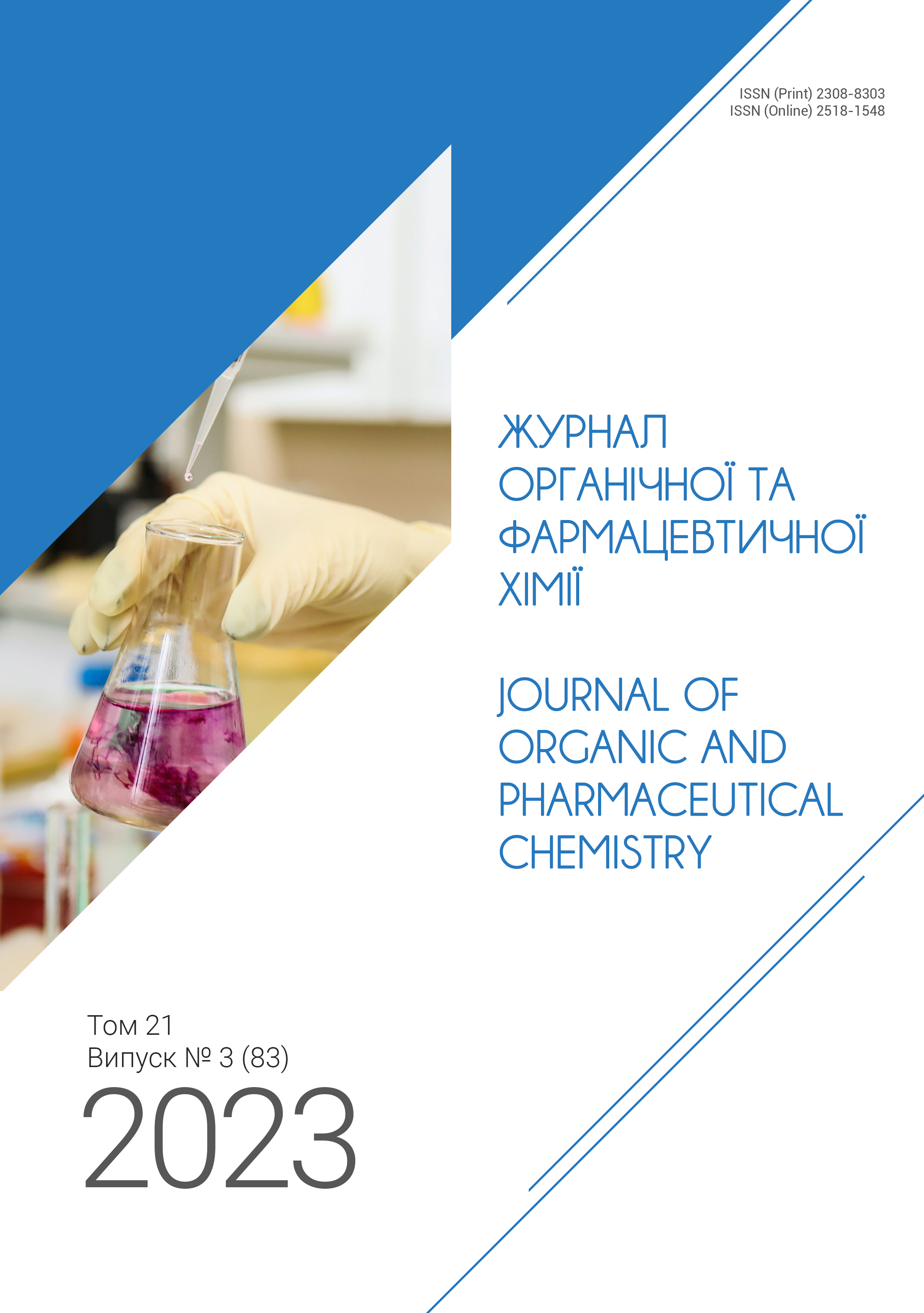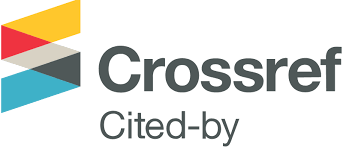Vol. 21 No. 3 (2023)
Full Issue
Original Researches
-
Features of Nitration of Aromatic Aldehydes with the Difluoromethoxy Group
Nitration of aromatic aldehydes with difluoromethoxy group results in the partial ipso-substitution of the aldehyde group if difluoromethoxy group is located in the para-position to the aldehyde group. The presence of a chlorine atom in the meta-position to the aldehyde group increases the contribution of the ipso-substitution, while the presence of a chlorine atom in the ortho-position to the aldehyde group reduces it. The presence of strong donors (alkoxy groups) in the molecule eliminates the contribution of the ipso-substitution.
-
Incorporation of gem-Difluorocycloalkyl Substituents into Heterocycles via the Levin’s “Nitrogen Deletion” Strategy
A series of compounds containing heterocyclic cores and gem-difluorocycloalkyl substituents was obtained under conditions of the parallel synthesis (i.e., simultaneous performance of reaction procedures, treatment of the reaction mixture, and product isolation for a number of similar transformations) using the reductive amination – the “Nitrogen deletion” reaction sequence. The synthesis of the target compounds commenced from heteroaromatic aldehydes and the corresponding gem-difluorocycloalkyl or (gem-difluorocycloalkyl)methyl amines and included the NaBH3CN-mediated reductive amination and “Nitrogen deletion” upon the action of Levin’s anomeric amide. It has been shown that the method can be used to obtain compounds with the aforementioned structural fragments separated by one or two methylene units. The developed protocol allowed for the preparation of a 12-member compound library (67 % synthetic efficiency). Therefore, this novel synthetic methodology is suitable for decorating heterocyclic cores with sp3-enriched substituents that are attractive for medicinal chemistry.
-
The Synthesis of Novel 2-Hetarylthiazoles via the Stille Reaction
A preparative approach to the synthesis of 2-hetaryl thiazoles has been developed via the interaction of halothiazoles with stannanes according to the Stille reaction. The most effective catalysts and reaction conditions have been found. It has been determined that the formation of by-products occurs due to specific interaction of the corresponding stannanes with the carbonyl group. The by-products have been isolated and characterized. The mechanism of this interaction with the carbonyl group has not been described in literature. The 2-hetaryl thiazoles obtained have great potential as new building blocks for medicinal chemistry and as ligands due to their complexing properties.
-
The Synthesis of Diverse Annulated Pyridines with 6-Membered Functionalized Saturated Cycles for Medical Chemistry Research
The article describes a set of pyridines annulated with functionalized 6-membered saturated rings, which are attractive building blocks for the synthesis of diversified compound libraries in medical chemistry. A certain array of compounds includes pyridines with condensed cyclohexane, piperidine and tetrahydropyran cycles containing keto-, amino-, carboxylic groups, as well as fluorinated fragments. The synthesis of the compounds using the procedure previously developed by us via CuCl2-catalyzed condensation of propargylamine with ketones was performed. The limits of application of this reaction were further expanded and determined in this work compared to our previous results. Condensed pyridines, which proved problematic or impossible to obtain by this method, were synthesized using other synthetic pathways. Thus, the study offers a number of new building blocks for use in drug discovery.
-
Metrological Characteristics of the Potentiometric Assay Developed for Determining the Antioxidant Activity of Ascorbic Acid
The potentiometric assay for determining the antioxidant activity of ascorbic acid has been developed and validated according to the following parameters: specificity, linearity, accuracy, repeatability, intermediate precision. The linearity was in the concentration range of 0.002 – 0.02 mol L–1 (r2 = 0.9993). The percentage of recovery was found to be in the range from 95.38 to 105.00 %. The values of %RSD for repeatability and intermediate precision were 1.86 and 1.95 %, respectively. The method is accurate and reliable, with the relative standard deviation of less than 2 %. It has been proven that the method developed is express, rapid, highly sensitive, accurate and sufficiently reliable.
-
Obtaining the Enoxaparin Sodium Substance Equivalent to the Original Clexane® and Lovenox®. The Selection of Technological Parameters and Optimization of the “Greenness” of the Purification Stage
The aim of the study was to adjust and optimize the purification stage of crude enoxaparin sodium to obtain a substance equivalent to the original drugs Clexane® and Lovenox® according to the criteria specified by the FDA. The purification stage involves the reprecipitation of crude enoxaparin in methanol. Determining the ratio of solvents required for the reprecipitation is important for studying the correlation between the experimental conditions of the technological process and the structural characteristics of enoxaparin samples. In the study, the method of purification of enoxaparin sodium described in the patent was assessed, and the following variations of the MeOH:H2O solvent ratio were selected – 4:1; 2:1; 1:1. The obtained samples of enoxaparin sodium were analyzed according to the in-house specification developed on the basis of the pharmacopoeial monograph, as well as by non-pharmacopoeial methods, such as two-dimensional NMR spectroscopy (HSQC) and size exclusion chromatography (SEC) for detailed characterization of the molecule. Strategies of greening of the enoxaparin sodium purification stage by reducing the E-factor were also considered in the study. Considering the principles of “green” chemistry, the method of purification of crude enoxaparin sodium was optimized by the solvent regeneration. It was experimentally possible to demonstrate the effect of the solvent ratio at the stage of purification of crude enoxaparin on the composition, as well as on the number and distribution of oligosaccharide fractions in the molecule. Based on the results of the study, it can be concluded that the ratio of MeOH:H2O=1:1 allows obtaining samples that are closest to Clexane® and Lovenox® in terms of the molecular weight distribution profile and the composition profile. The E-factor was also reduced from 14 to 5.25 by solvent regeneration.
-
A New Method for Studying the Kinetics of the Release of Poorly Soluble API from Solid Oral Dosage Forms on the Example of Quertin®
In this paper, it is proposed to consider a new method developed for studying the kinetics of release of substances that are poorly soluble in aqueous media on the example of quercetin. The study object was the drug containing plant bioactive components – Quertin® chewable tablets, 40 mg, 3 blisters, 10 pcs – produced by PJSC SIC “Borshchahivskiy CPP”. An Agilent 1290 Infinity II LC System liquid chromatograph with an Agilent 6530 mass selective detector (Agilent Technologies) was used for the analysis. Solubility profiles were studied in accordance with the requirements of the Biopharmaceutical Classification System (BCS). The solubility limit of the substance in the media studied has been determined. A method for the quantitative determination of quercetin in test media in the range of specified concentrations with high sensitivity and selectivity has been developed. The dissolution of Quertin® chewable tablets in 3 different aqueous dissolution media with pH 1.2, pH 4.5 and pH 6.8 was studied, the dissolution profiles were compared, and the f2 factor was calculated. This factor is a criterion for evaluating the study by comparing dissolution kinetics with in vivo results. The results obtained indicate that the approach proposed to studying the kinetics of the release of substances that are sparingly soluble in aqueous solutions allows us to correctly assess the release of such substances in accordance with the requirements of the BCS. The method developed has been validated.










